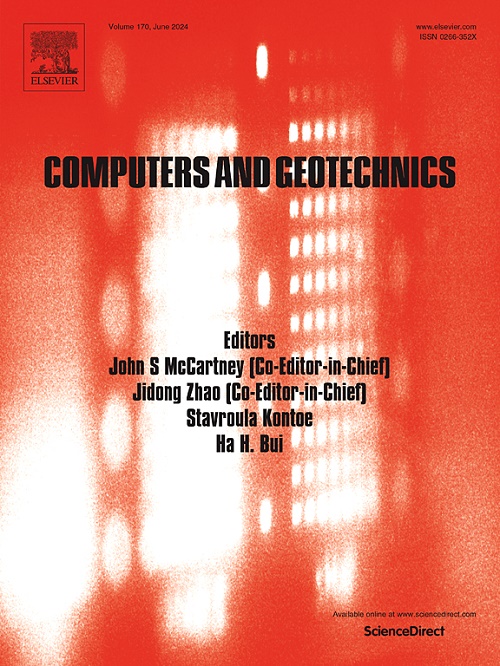Coupled geological modeling using multi-source data: A K-dimensional tree-graph convolutional neural process approach
IF 6.2
1区 工程技术
Q1 COMPUTER SCIENCE, INTERDISCIPLINARY APPLICATIONS
引用次数: 0
Abstract
Building a reliable geological model is essential for optimizing construction costs and mitigating risks from unforeseen ground conditions. Existing methods fail to couple soil types (geological structure) with their properties and lack the integration of multi-source data. This paper presents a novel deep-learning method using the K-Dimensional Tree-Graph Convolutional Neural Process (KDTree-GCNP) for structure–property coupled geological modeling. The KDTree is firstly proposed to efficiently generate graph nodes and edges in the Graph Convolutional Network (GCN) using the neighboring nodes aggregation procedure in the three-dimensional (3D) domain. Subsequently, the proposed GCNP aggregates the soil types and the properties for each graph node based on its adjacent nodes, followed by the message updating within the Neural Process (NP) so as to admit uncertainty quantification in geotechnical property predictions. Multi-source data including borehole logs, laboratory tests, in-situ tests, and geological profiles, are fused to the geological model. The proposed KDTree-GCNP method is verified using a benchmark study and applied to a tunnel project in Nanjing City. The results demonstrate that the proposed method is powerful in 3D coupled geological modeling, achieving high accuracy with coefficient of determination (R2) values of 0.82–0.97 for geotechnical property predictions and 97% accuracy for soil type classification. Finally, the current challenges and future opportunities are discussed in depth, including methodological insights on graph convolution in the spectral domain, physics-informed constraints, and uncertainty quantification challenges.
使用多源数据的耦合地质建模:一种k维树形卷积神经处理方法
建立可靠的地质模型对于优化施工成本和降低不可预见的地面条件风险至关重要。现有方法未能将土壤类型(地质构造)与其性质进行耦合,缺乏对多源数据的整合。提出了一种利用k维树图卷积神经过程(KDTree-GCNP)进行构造-属性耦合地质建模的深度学习方法。首先提出了KDTree方法,利用三维域的相邻节点聚合过程,在图卷积网络(GCN)中高效地生成图节点和边。然后,GCNP基于相邻节点对每个图节点的土壤类型和属性进行聚合,然后在神经过程(NP)中进行消息更新,从而在岩土力学属性预测中实现不确定性量化。包括井眼测井、实验室测试、现场测试和地质剖面在内的多源数据被融合到地质模型中。通过基准研究验证了KDTree-GCNP方法的有效性,并将其应用于南京市某隧道工程。结果表明,该方法具有较强的三维耦合地质建模能力,岩土性质预测的决定系数(R2)为0.82 ~ 0.97,土壤类型分类的准确率为97%。最后,深入讨论了当前的挑战和未来的机遇,包括谱域图卷积的方法学见解、物理信息约束和不确定性量化挑战。
本文章由计算机程序翻译,如有差异,请以英文原文为准。
求助全文
约1分钟内获得全文
求助全文
来源期刊

Computers and Geotechnics
地学-地球科学综合
CiteScore
9.10
自引率
15.10%
发文量
438
审稿时长
45 days
期刊介绍:
The use of computers is firmly established in geotechnical engineering and continues to grow rapidly in both engineering practice and academe. The development of advanced numerical techniques and constitutive modeling, in conjunction with rapid developments in computer hardware, enables problems to be tackled that were unthinkable even a few years ago. Computers and Geotechnics provides an up-to-date reference for engineers and researchers engaged in computer aided analysis and research in geotechnical engineering. The journal is intended for an expeditious dissemination of advanced computer applications across a broad range of geotechnical topics. Contributions on advances in numerical algorithms, computer implementation of new constitutive models and probabilistic methods are especially encouraged.
 求助内容:
求助内容: 应助结果提醒方式:
应助结果提醒方式:


